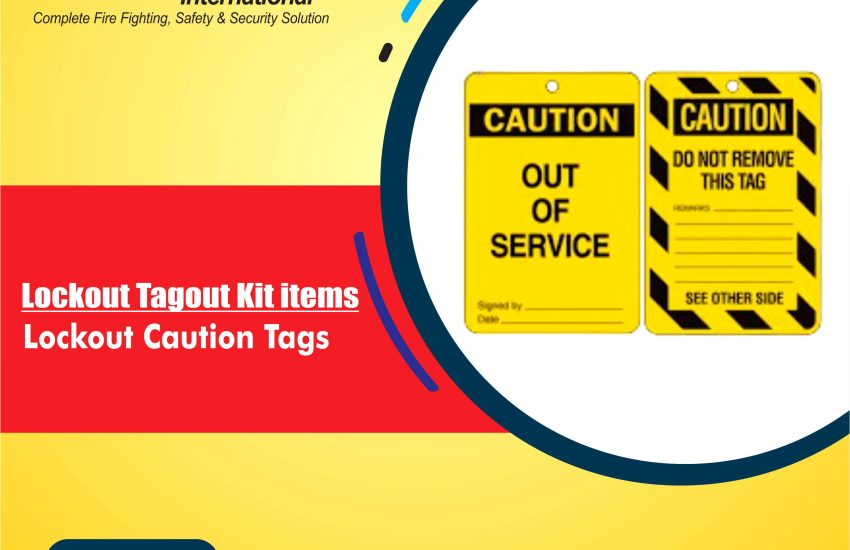Lockout Caution Tags are essential for workplace safety, especially in industrial and commercial environments. These tags are part of lockout/tagout (LOTO) procedures, which prevent accidental equipment start-up or energy release during maintenance or repair. This guide explains the importance of lockout caution tags, relevant regulations, how to choose the right tags, and best practices for using them.
What Are Lockout Caution Tags?
Lockout caution tags are safety labels that provide warnings, instructions, and critical safety information. They are attached during lockout/tagout procedures to indicate that a piece of equipment is isolated from energy sources. These tags prevent workers from using the equipment until it is safe to do so.
Why Lockout Caution Tags Matter
- Prevent Accidents: Lockout caution tag clearly signal that equipment is under maintenance, reducing the risk of injuries from accidental machine start-up.
- Ensure OSHA Compliance: OSHA requires lockout/tagout procedures to protect workers. Lockout caution tag help businesses stay compliant with OSHA standards.
- Clear Communication: Tags provide essential information, helping workers understand when it is safe to work on machinery and when it is not.
- Promote Safety Awareness: By using lockout caution tag, workplaces highlight the importance of following safe work practices.
Key Components of Lockout Caution Tags
When choosing lockout caution tag, ensure they have the following features:
- Bold, Readable Text: Use large text and strong colors like red or yellow to make the tags visible.
- Warning Symbols: Include well-known symbols to communicate the message quickly. A padlock symbol, for example, shows that the equipment is locked out.
- Space for Custom Info: Tags should allow workers to add personal information, such as the name, date, and expected time of completion.
- Durable Material: Select tags made from materials that withstand harsh environments, such as laminated paper or plastic.
- Non-Transferable: Ensure tags stay with the equipment they are meant for and are not moved between different machines.
Types of Lockout Caution Tags
There are several types of lockout caution tag. Some of the most common ones include:
- Standard Lockout Tags: These basic tags include a warning message and space for personal identification.
- Lockout/Tagout Combination Tags: These tags combine both lockout and tagout information, ensuring both procedures are communicated.
- Custom Lockout Tags: These tags are designed for specific machinery or company needs and can include unique warnings or instructions.
Best Practices for Using Lockout Caution Tags
To make the most of lockout caution tags, follow these best practices:
- Follow OSHA Guidelines: Adhere to OSHA’s 1910.147 standards for lockout/tagout procedures to ensure compliance and safety.
- Verify Lockout Status: Always confirm that equipment is locked out before attaching the caution tag. Ensure all energy sources are properly isolated.
- Securely Attach Tags: Use zip ties or other fasteners to attach the tag to the equipment, ensuring it stays in place.
- Use Lockout Devices: Lockout caution tag should always be used with lockout devices like padlocks or valve locks to prevent unauthorized operation.
- Inspect Tags Regularly: Periodically check the tags for signs of wear and replace any that are damaged or illegible.
Choosing the Right Lockout Caution Tags
When selecting lockout caution tag, consider the following factors:
- Material Durability: Choose tags made from materials that resist chemicals, moisture, and temperature changes.
- Compliance: Ensure tags meet ANSI or OSHA standards for lockout/tagout procedures.
- Visibility: Opt for tags in bright colors like red, yellow, or orange to grab attention.
- Ease of Use: Select tags that are easy to write on and attach, such as tear-resistant options with clear writing spaces.
Conclusion
Lockout caution tag are essential for ensuring safety when working with machinery or equipment. By following OSHA guidelines, choosing durable tags, and using best practices, employers can reduce the risk of accidents and injuries. Always ensure proper lockout/tagout procedures are in place and encourage workers to follow safety protocols.


